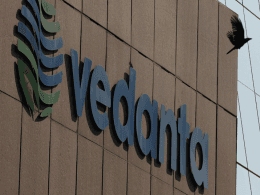Presenting the 81st Union Budget of the country, Finance Minister Pranab Mukherjee has come up with a new solution for easing the debt problems of ailing sectors like aviation, road construction and power sector. And that solution happens to be external commercial borrowing (ECB).
Although ECB is not a new concept for raising money, what comes as a surprise is there are many firsts in the way Mukherjee is allowing ECBs to be raised. First of all, he is allowing ECB to be raised for meeting working capital issues. Also, without granting an industry status, the UPA minister has allowed raising money via this route for low-cost, affordable housing projects.
As Mukherjee began his ECB bonanza, he first proposed ECB to part-finance the rupee debt of existing power projects.
Samir Kanabar, Partner at SR Batliboi and Co, said, “Predominantly allowing the power companies to raise ECB will help refinance debt on their books. There are a lot of Indian power companies who are not able to sustain their operations as prices of raw materials like coal have increased and this will help them reduce their cost of borrowing by replacing their rupee debt. As the CRR has not been reduced by the Reserve Bank of India, it will take another 6-9 months before interest rates are reduced. Therefore, ECBs will help these companies raise foreign debt at lower interest cost. At present, Indian banks have huge exposure towards the power sector and the loan book is heavily under stress. But with this provisioning, they will be able to recover their rupee debt. Also, the reduction in tax on interest payable will come down from 20 per cent to 5 per cent and it will further reduce the cost of borrowing.”
In order to provide low-cost funds to some stressed infrastructure sectors, the rate of withholding tax on interest payments on ECBs is proposed to be reduced from 20 per cent to 5 per cent for three years. The sectors coming under the purview of the same include power, roads and bridges, airlines, ports and shipyards, affordable housing, fertiliser and dams.
With the aviation industry grappling to come to terms with its working capital shortage and debt issues, Mukherjee has breathed new life to the sector by allowing it to raise working capital loans via the ECB route. This is the first time that ECB has been allowed for raising working capital; it is, usually, a mode for raising project capex.
Mukherjee said in his budget speech to the nation, “To address the immediate financing concerns of the civil aviation sector, I propose to permit ECB for working capital requirements of the airline industry for a period of one year, subject to a total ceiling of $1 billion.”
This move is set to help the Indian aviation industry, especially the king of good times, Vijay Mallya’s Kingfisher Airlines, Jet Airways and the debt-laden national carrier Indian Airlines, to raise money for their daily operations which have gone haywire with non-repayments to lenders.
However, industry experts believe that even with the provisions, the bleeding sector will find it difficult to find lenders to lend at bargainable interest rates.
Investments worth $1 trillion are envisaged for the infrastructure segment in the 12th Five Year Plan and 50 per cent of the amount is to come from the private sector. To encourage public-private partnerships (PPP) in road construction projects, the finance minister has proposed to allow ECB for capital expenditure on the maintenance and operations of toll systems for roads and highways, so long as they are a part of the original project.
Hemant Kanoria, managing director of Srei Infrastructure, says, “The Finance Minister has understood the criticality of ECB and has rightly allowed ECB financing to play a larger role in sectors like roads, power, railways, housing, mining, etc. However, he has not mentioned anything on raising the annual cap of $30 billion, which is now applicable for ECB in India. We hope that cap will be raised in due course.”
Not to be left behind, the ailing housing sector has also found itself mentioned in the gamut of ECB-raising schemes. Mukherjee has allowed ECB for low-cost affordable housing projects. However, it is unclear what is the upper cap and guidelines for declaring the projects under this segment. In Indian real estate space, the word ‘affordable housing’ is a relative concept and there are no specific guidelines provided by the government for the same.
Pranay Vakil, country head of the real estate consultancy Knight Frank India, who is closely working with the draft regulatory bill of Indian real estate, said, “All this time, ECB was not permitted for the real estate sector as RE does not have an industry status. With this permission, it will be possible for developers to raise money at 2-3.5 per cent borrowing cost, as compared to 12-13 per cent charged by the Indian banks, and the government expects the benefits will be passed on to the buyers.”
But realty consultants point out that all developers would not be able to take advantage of the minister’s offering.
According to Vakil, “There is always a foreign exchange risk and the repayment value could be high due to rate fluctuations. Also, people who borrow via ECB, always take cover for six months and there is a cost involved for doing that; so a part of the 10 per cent interest cost advantage could easily be wiped out with all these factors.”
To add to it, not all developers involved in the business of developing low-cost, affordable housing, have strong balance sheets to show to lenders. Six-month libor for the week ended March 16 is 0.74 per cent.






